Buy A New Car
Is it Time we Scrap the Luxury Car Tax?
Following changes to the thresholds for the luxury car tax, the future of the impost is once again in the spotlight, especially now that Australia’s days of local auto manufacturing are well and truly in the rear-view mirror. The measure was first introduced with the intention to help protect local manufacturers amid the slew of high-spec vehicles that one can only assume were deemed to be an ‘impediment’ to jobs and the economy.
On the back of the changes in 2022, the 33% tax applying to imported vehicles less than two years of age now covers a value in excess of $71,849 including GST, or a threshold of $84,916 for fuel-efficient vehicles where that car consumes no more than 7L of fuel per 100km.
Given the tax contributes hundreds of millions of dollars to the Federal Budget, it’s not like the government doesn’t have an incentive to prop up another tax as long as Joe Public foots the bill. That’s despite the fact that the tax has long been considered a thorn in the side of the European Union and negotiations of a free trade agreement. But while the amount of tax proceeds may seem vital to the country, the costs to administer the tax are arguably as much as what it reaps.

What circumstances have changed?
One of the key differences now, as opposed to when the tax was first introduced, is that the new car industry is in a dire position thanks to the global supply chain crisis, as well as issus securing stock. Interest rates are now on the rise, but even at historic lows, the industry has been seeing sales slide for some months now after a brief respite. All the while, more buyers are transitioning to SUVs and other more-affordable and reliable brands.
In addition, the impact of the tax on some of those hardest-hit by natural disasters has started to unfold. More specifically, many farmers have bought vehicles that are slapped with a luxury car tax – and no, they’re not driving around in Mercedes AMGs or Ferraris for that matter, but workmanlike vehicles such as the Toyota LandCrusier or Prado – yet all the while, the effects of natural disasters continue to weigh on their livelihood. Motorists are ultimately the ones who foot the bill for the LCT, even though it was designed to be absorbed by dealerships.

The reality of the situation
Frankly, at the end of the day, Australians shouldn’t be slugged to protect an industry that no longer exists. The local manufacturing industry, while beneficial from a jobs perspective, was artificially supported for longer than was ever realistic or sustainable. In fact, it’s easy to argue that the plug should have been pulled on the LCT earlier, back in 2017 when Holden ceased manufacturing operations.
Even if the government has a vested interest in maintaining an otherwise unnecessary tax, the mechanics of it just don’t make sense when not only has it not been tied to inflation – that would mean higher thresholds that are more ‘friendly’ to new car buyers to day – but we are supposed to be trying to encourage people to adopt fuel efficient cars. Yet, here we are, punishing motorists who purchase ‘eco-friendly’ vehicles. That the luxury car tax has lasted this long, is a true surprise, particularly if we’re keen to stave off a potential recession. Let’s not even get started on those unnecessary import tariffs either…for now at least.
Buying a New Car with a Colour In Mind
We’re all different in many ways, and each of us has a list of favourite colours we draw upon in preference to others. That’s why when we redecorate our house, we’ll often choose the colours that suit our own tastes, or we’ll opt for a set of colours we like to dress ourselves in when it comes to buying and wearing clothes. While a car’s colour doesn’t actually affect its performance (“red cars go faster!”) or its handling, colour can certainly have a psychological effect on the car-buyer and the beholder.

Colours in the Rainbow
A car’s colour can also affect safety out on the road, and it might even affect the price of the car – in the case of second-hand vehicles, especially. And if you’re buying a new car, you often get a choice of colour, so it pays to be informed on car colour and why some colours are more popular than others!
Ready to buy a car? Research has shown that opting for a neutral colour like white, black, grey, and silver are your safest bets if you intend to sell the car to someone else later. In addition to the rising popularity of grey and silvery tones, other colours from greens to blues, reds and even violet colours currently seem to hit a chord with new car buyers.
However, if you want to expand your car colour palette, you may also appreciate learning that egg-yolk yellows, bright yellows, brown, bright orange, or even a vibrant purple colour for your new car could put you at a disadvantage when it comes time to selling or trading in for another vehicle. Naturally, these colours will appeal to a small niche of car buyers buying second-hand. Strike one of these limited buyers and I guess you could say it could also work in your favour. That said, younger drivers are making a move toward bright neon colours and bolder primary colours.
Some cars do look amazing, even quite spectacular in certain colours. Nevertheless, here is the list of car colours you should get the lowdown on, which will offer a heads-up before handing any money over and some handy hints and advice.

White: Here is the most popular car colour on the road. White is in the easy-to-care-for group and tends to look newer for longer, but white also tends to show mud and splashes easier than grey or silver. White is the safest colour for driving, thus making it one of the most common car colours we see out on the road. As our roads tend to be black or dark-grey, a white car stands out more readily and can be seen more easily by other road users. White cars are better noticed even during poor light conditions (e.g., during dusk or dawn). Still, because white is such a common car colour, white cars can be seen as a little bit bland and boring.

Black: A sleek black is always popular and looks amazing on almost any car. It is a prestige colour, being the colour of business suits and briefcases. Black is also a dark, sleek, and mysterious colour – think sunglasses, a black leather jacket, and boots. From an image perspective, black is sexy and savvy, and it is seen as being suave, a colour appealing to both the masculine and feminine. Black also makes a great canvas for a company logo.
From a safety perspective, black isn’t a terrific colour to be driving in because black cars are harder to see in conditions of poor light. Black also looks best when it’s fresh out of the car wash. Just give it a few minutes on a windy day and it will likely be covered with pollen, dirt, and dust all over again.

Silver and Grey: According to various studies, grey and silvery coloured cars are the easiest to clean, and they remain looking cleaner for longer. Dirt and dust can hide a little easier on grey surfaces, so your grey/silver car can look cleaner for longer. Silver looks a little brighter and shinier than your standard grey tones, adding a bit more class and elegance to the look in much the same way black can do. Silver, like black, might be worth considering then if you happen to regularly attend executive boardroom meets in the business world.

Red: Red is quite a popular car colour once you steer clear of the top three. Psychologists tell us that red is stimulating and alerting. Red cars are also cheerful and friendly, attracting the kids. Red is a flashy car colour and tends to hide mud easier than some of the other more vibrant colours. Nonetheless, red does become dull when dirty. Red colours are also more vulnerable to sunlight fade, requiring the need to head to the paint shop for a spruce up much sooner than many other colour types.

Blue: Blue is a colour on the rise and with the latest paint technology you can get all sport sorts of different shades from ocean blue to summer blue skies. Blue car colours are often associated with the environment and sustainability. There are many bright and bold blues that are quite eye-catching and attractive. This colour isn’t an easy colour to keep clean. Blues tend to show water spots easily. Scratches and swirl marks, and body bumps and bruises are more readily noticed on blue cars.

Brown: This colour is quite rarely seen on cars, as are golds and bronzes, however it is making a comeback in some of the more luxurious brands of car. Brown is a warm, eco-friendly colour that doesn’t show the dirt too badly. Browns are harder to see out on the road and are frowned upon from a safety perspective, but that’s where your DRLs come in handy!

Green: Green is also associated with the environment, so you would think that it would be the top choice for hybrids and bio-fuel vehicles. Oddly enough it isn’t particularly, unless of course you want to make more of a point about being a really green and sustainable person. Green colours come in two types: a) bright apple and lime tones, which tend to be associated with small, fun hatchbacks like a Toyota Yaris or b) dark greens, which are more sophisticated and often found on Jaguars, BMWs, and Audis. Green makes a reasonable canvas for a company logo and is often the choice for gardening contractors or conservationists.
From a safety perspective, the brighter shades of green tend to be quite eye-catching in daylight, mostly because it’s not a common colour out on the road. A darker green colour combines quite honourably with the dirt of an off-road 4×4. Generally, green coloured cars are easier to keep cleaner for longer than many other colours you can choose from. But green also shows paint and surface imperfections easier than grey, silver, and white cars do.

Orange: This lovely bright colour not only commands the beholder’s attention but it’s easy to clean. Orange isn’t always everybody’s cup of tea, so selling on might be harder than you might think. It tends to be good for road safety because there are only a few orange cars on the road, so they stand out.

Yellow: Yellow definitely stands out on highways. Yellows also easily hide dust and pollen. Nevertheless, yellows do emphasize mud splashes when you find yourself driving in wet and muddy conditions. Not everyone is a fan of yellow cars.

Purple: purple is another rarely seen colour. Violet and lavender purples tend to be associated with creativity and quirkiness, and the dark eggplant tones associated more with royalty. Purple cars are very noticeable and can look very striking, but this is also because they are rarer.

Pink: Traditionally, pink has been a colour that is considered to be sweet, soft, and feminine. Bright pinks tend to be rather visible – probably on a level with yellow from a safety perspective – but is also a rather fun colour for a car.
People who like to drive sports cars or who want to simply stand out from the crowd will be the car buyers who opt for a brighter, bolder colour – and why not!?
Fuel Miser Comparison (2010/2022) Smart-VW

I thought I’d look at a list of cars that featured in an article written back in 2010, where I compared some of the thriftiest cars at that time. These were cars which had been designed to function as some of the world’s best fuel sippers. These vehicles were sold new in Australia, but I thought I’d add a new twist this time by adding what we can consider as the brand new version of these old models with their statistics for fuel consumption as a comparison – you know, a bit of nostalgia along with the new, and what’s changed – or not.
Note that the fuel consumption figures are based on the number of litres of fuel consumed every 100 km travelled. Often real world situations can play havoc with Lab tested fuel consumption figures, but this definitely gives you an interesting picture And, here is the list that is in alphabetical order – just to be helpful:
Smart
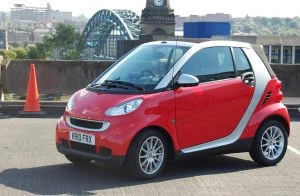
2010 Smart ForTwo
By far the smallest car being talked about in 2010 with excellent fuel consumption was the Smart ForTwo. It still fits into car parks like you wouldn’t believe! Small and safe, comfortable and peppy, any smart CBD commuter would be tempted by the tiny Smart ForTwo. It boasts a combined fuel economy figure that sits well under 5 litres/100 km – and this all coming from a ULP motor. Currently you can’t buy any new Smart car in Australia, though I’ve heard that, in the near future, they are making a comeback with purely electric power and with new design.
SsangYong
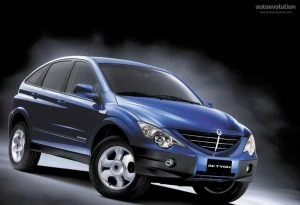
2010 SsangYong Actyon SUV
At the time, the 2010 SsangYong Actyon was about the most frugal SUV you could buy new at an impressively low price. The economic SUV has muscly looks and a rugged design that could see the vehicle handling tough off-road terrain with ease. SsangYong uses a 2.0 litre turbo-diesel engine in this vehicle, which packs over 300 Nm of torque to go with its excellent 4×4 underpinnings. Getting any 1.8 tonne vehicle to manage under 5 litres/100 km is a feat. So, well done to SsangYong! Currently, no more SsangYong vehicles quite match the excellent economy of an Actyon Diesel.
Suzuki
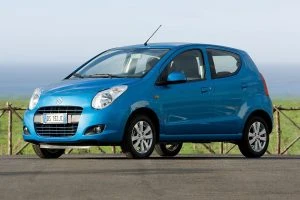
2010 Suzuki Alto
Budget priced, and one of the few petrol powered cars back in 2010 delivering awesome fuel economy was the Suzuki Alto. The Suzuki Alto 1.0 litre GL and GLX has an attainable fuel economy figure of 4.8 litres/100 km. The Suzuki Alto is also nice looking (bug-eyed), has six airbags, and even comes with ESP as standard in the GLX model. Great for around town – you’d be nuts to not consider an Alto.
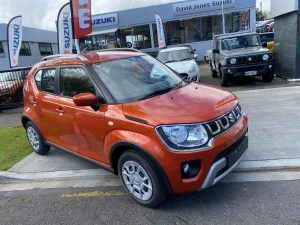
2022 Suzuki Ignis
There are no new Altos in 2022, but Suzuki do offer us the awesome little Suzuki Ignis GL Manual and GLX auto. These cars use a 1.2-litre ULP motor and deliver a similar fuel consumption to the 2010 Alto. Safety in new Suzuki cars has taken a big leap forward, so too has all the modern technology. Brand new Swift and Baleno models are definitely worth a look. These are also economy-driven cars with decent comfort, technology, and practicality.
Toyota
Where would the world be without Toyota? For a very frugal, spacious, and practical drive, the clean burning 2010 Toyota Prius III offered a 1.8 litre petrol hybrid engine. It didn’t come cheap, but it was certainly friendly on the environment. You could expect around 4.0 litres/ 100 km – sometimes better.
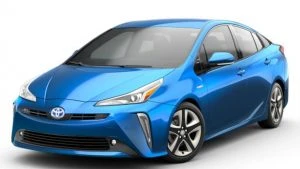
2022 Toyota Prius
You can now buy a 2022 Toyota Prius model for between $42–50k. These are nice cars and much more impressive to look at than the older models. They are safe and packed with excellent features. The Prius still continues with the same petrol-electric engineering that made it such a standout when it was launched in 2001. The same basic technology remains for the 4th-generation Prius, as well as all Toyota/Lexus hybrids these days. So, what a new Prius offers is a small-capacity 4-cylinder engine that works through a planetary gear set to dispense the delivery of power to the front wheels (or also the rear wheels in SUV variants). The current Toyota Prius is powered by a 72kW/142Nm 1.8-litre engine that combines with an electric motor to produce a joint maximum power output of 90kW and a claimed fuel consumption of 3.4 litres/100km. Better than ever! Toyota newest vehicles: the CH-R, Camry, Corolla, RAV-4, and Yaris Hybrid models are available with very low fuel consumption figures. Toyota and Honda are masters of the Hybrid-game, and have been for quite some time.
VW
Back in 2010, the Germans offered plenty of cars with excellent fuel consumption. Volkswagen has for a long time offered well-designed, reliable and fuel efficient motorcars. They are generally refined, elegant, and roomy, and the 2010 VW Golf 77TDI variant easily boasts fuel economy figures below 5 litres/100 km on a combined cycle.
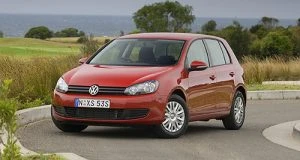
2010 VW 77TDI
2022 sees the Golf Hatch with 5 models, and in Wagon form it has a couple of nice new variants. The base models use a 110TSI 1.4-litre ULP motor, which is a 4-cylinder that is smooth and can return a claimed 5.8 litres/100 km. 250 Nm of torque offers muscle when you need it, and the car cruises at high speed effortlessly. The 8th-generation of the Golf brings not only fresh external and interior design, but it is also the safest, most tech-laden ever.
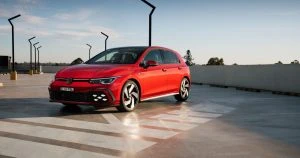
2022 VW Golf 110TSI
There are other new cars right across the auto-manufacturing spectrum now that offer superb fuel economy or EV power alone. It’s interesting how in that time (2010–2022) we’ve seen auto manufacturers taking a shift away from providing the new-car buyer with several frugal diesel family options to a fleet that is now a lot more Hybrid in flavour. It’s a change coerced by new government law and regulation. However, hybrid vehicles are superb automobiles that offer top fuel consumption figures and practicality, creating that much needed bridge between purely fossil fuel vehicles and completely EV-powered automobiles
Do check out the brand new arrivals. Cars like the Hyundai IONIC, Hyundai KONA, Kia EV6, Kia Niro, Mazda MX-30, BMW i and Hybrid models, Mercedes Benz EQA and EQC models, MG HS EV, Polestar cars, Tesla, and Volvo’s Recharge and Hybrid models are just some of the amazing new cars available that we can now buy that weren’t even a showing back in 2010.
Happy commuting!
Fuel Miser Comparison (2010/2022) Ford-Peugeot

I thought I’d look at a list of cars that featured in an article written back in 2010, where I compared some of the thriftiest cars at that time. These were cars which had been designed to function as some of the world’s best fuel sippers. These vehicles were sold new in Australia, but I thought I’d add a new twist this time by adding what we can consider as the brand new version of these old models with their statistics for fuel consumption as a comparison – you know, a bit of nostalgia along with the new, and what’s changed – or not.
Note that the fuel consumption figures are based on the number of litres of fuel consumed every 100 km travelled. Often real world situations can play havoc with Lab tested fuel consumption figures, but this definitely gives you an interesting picture. And, here is the list that is in alphabetical order – just to be helpful:
Ford
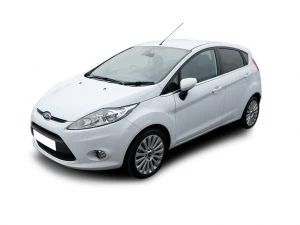
Ford Fiesta Econetic 2010
Back in 2010, the benchmark for fuel-misers belonged to the stylish Ford Fiesta Econetic. Nothing was able to beat the claimed 3.7 litres/100 km fuel economy figure that this car offered. It is a nicely designed car that looks good even today, and is also a great handling FWD Hatch.
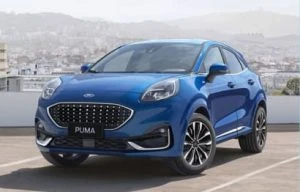
Ford Puma 2022
I’m not quite sure why, but Ford no longer sell us a new Fiesta Hatchback. However, you can buy a brand new Ford Fiesta-based Puma in 2022, which is a small SUV (Hatchback on steroids) that comes with a 92kW/170Nm 3-cylinder turbo petrol engine. Cabin space is claimed to be class-leading, and the boot expands from 456 litres to 1161 litres. You can also enjoy a fuel consumption figure of around 5.3 litres/100 km.
Honda
Honda’s ever reliable Civic is still a nice drive today. In 2010 Honda offered it in a Hybrid Sedan shape that employed a little 1.3 litre Hybrid Honda engine, delivering a combined economy of around 4.5 – 5.0 litres/100 km.
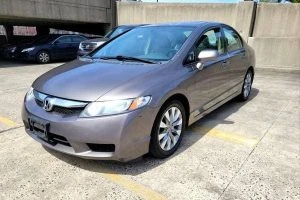
Honda Civic 2010
2022 sees the Civic come alive with a very classy exterior and a powerful 1.5-litre Turbo petrol engine with 131 kW of power and 240Nm of torque. Somewhere around 6.3 litres/100 km is attainable, and with a ride that is comfortable and athletic.
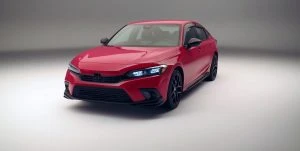
Honda Civic 2022
To find Honda’s current fuel miser, the brand new HR-V is an eco-friendly rewarding drive. Honda’s e:HEV technology in the HR-V utilises an intelligent 2-Motor i-MMD hybrid system that seamlessly switches between three modes to give you optimal performance, and a smoother, greener, and more fun driving experience. A claimed 4.3 litres/100 km for the e:HEV-L hybrid and 5.8 litres/100 km for the Vi X 1.6-litre petrol motor is on offer.
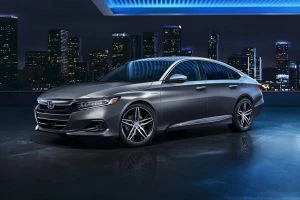
Honda Accord Hybrid Sedan 2022
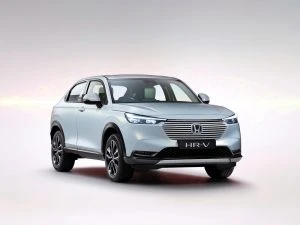
2022 Honda HR-V
All class, you can also get yourself into one of the best Hybrid Sedans you can buy: the 2022 Honda Accord Hybrid. It boasts a claimed 4.3 litres/100 km combined fuel economy – a very good figure for what is a sporty, comfortable family sedan, with striking looks and all the modern goodies.
Hyundai
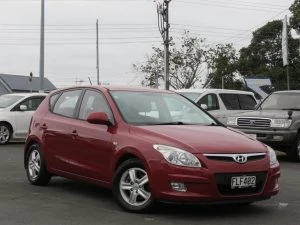
Hyundai i30 CRDI 2010
Back in 2010, Hyundai had come to the economy party with its 1.6 litre turbo-diesel Hyundai i30, known as the SX CRDi. Back then, it was Australia’s cheapest diesel car to buy new. The car was pleasant to look at, and it had a nicely finished interior and plenty of zip. With 255 Nm of torque, and a fuel economy figure of 4.7 litres/100 km, it’s still an economic little car to drive around in today.
2022 has seen Hyundai exploding with all sorts of new and exciting models that are economical, practical, and full of all the best safety and technology as standard! Hyundai’s 2022 i30 Sedan and Hatch can come with a 120kW/203Nm 2.0-litre aspirated petrol engine, a 150kW/265Nm 1.6-litre turbo-petrol and, in hot N variants, a storming 206kW/392Nm 2.0-litre petrol turbo. The 1.6-litre Turbo is the most frugal, offering around 6.8-7.0 litres/100 km combined.
But wait, there’s more! Hyundai’s 2022 IONIC and KONA models have skipped the Hybrid tech and gone straight to EV power.
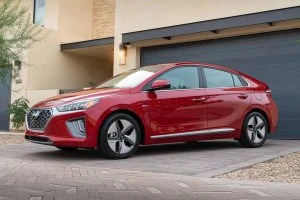
2022 Hyundai IONIQ
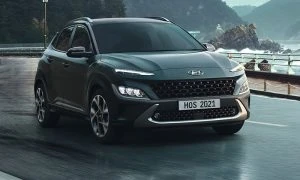
2022 Hyundai KONA
MINI
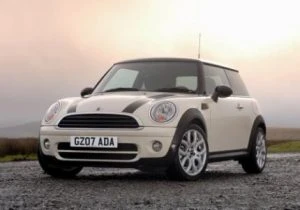
2010 Mini Cooper D
Mini, or BMW more correctly, offered the little Mini Cooper D in 2010 with a small 1.6 litre turbo-diesel engine, excellent fuel economy, and plenty of punch. As the frugal engine is linked to a six-speed manual gearbox, the claimed 3.9 litres/100 km was doable in a number of conditions.
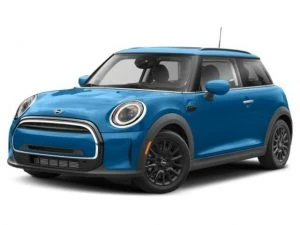
2022 Mini Cooper Classic
Fast forward to 2022, and a new Mini still has one of the catchiest hatchback designs you can buy, along with, perhaps, the best handling characteristics in a FWD small hatchback. They are definitely worth a look and loads of fun. You have many different models to choose from, however the base model Mini Cooper Classic is the most efficient now, with no diesel engine offered anymore. The 3-cylinder 1.5-litre Turbo petrol engine uses DOHC with VVT and VV-Lift technology, and can return a BMW claimed 4.9 (Highway), 6.9 (City), and 5.7 (combined) litres/100 km, respectively.
Peugeot
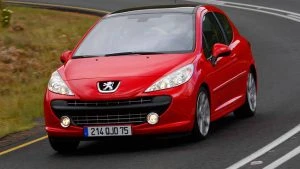
2010 Peugeot 207
Small French Pugs have always been a favourite hatchback of mine. For all their quirks, they are comfortable, practical, efficient, and generally classy all-round. In 2010, the little Peugeot 207 offered a fine economy package in the XT HDi, boasting just 4.8 litres/100 km combined.
2022 sees Peugeot offering us the 2008 GT with a ULP 1.2-litre Turbo 3-Cylinder motor capable of 114 kW, 240 Nm and a claimed economy figure of 6.1 litres/100 km. With this one, you get a very comfortable, practical little SUV with premium safety features.
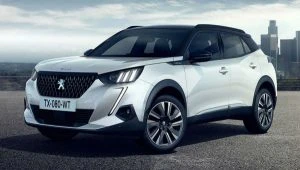
2022 Peugeot 2008 GT
Hybrids have taken off, and so the best and most impressive Peugeot of the lot is the new Peugeot 508 GT Plug-in Hybrid. The 508 range has stunning lines and is an exciting car. The 508 Sedan or 508 Wagon are roomy, very comfortable, and loaded with excellent technology and safety. You fork out around $77k for one of these new, however, it costs way less than a German equivalent. Peugeot reckon you can obtain 1.8 litres/100 km of ULP fuel use if your commute’s stars align. Regardless of whether you quite get down to this, this sort of hybrid travel is impressive in its own right!
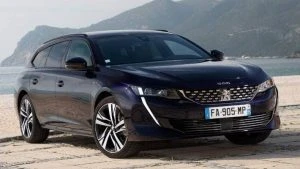
2022 Peugeot 508 GT Wagon